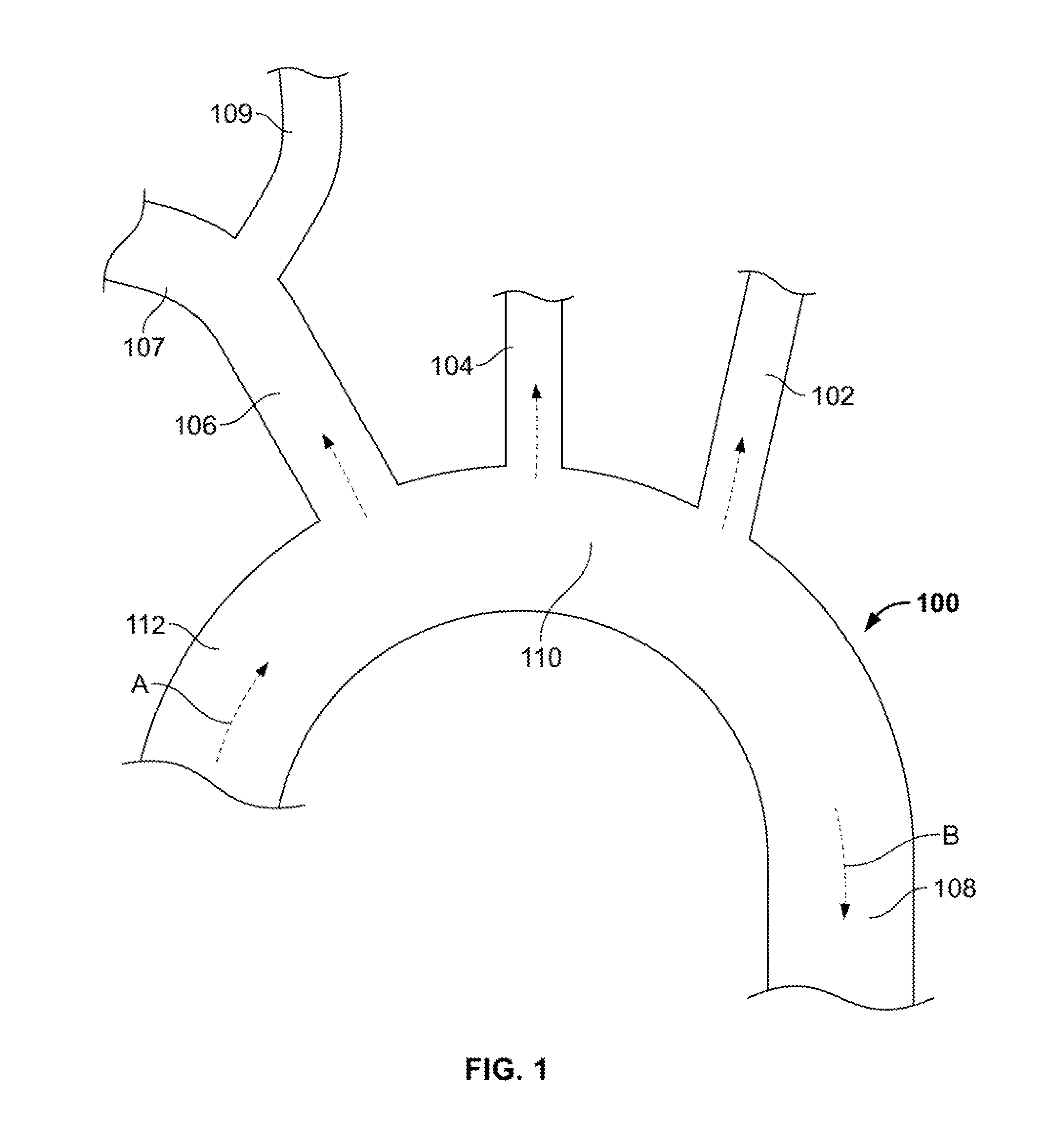Embolic protection device
a protection device and embolism technology, applied in the field of embolism prevention, can solve problems such as brain cell death and potential life-threatening complications
- Summary
- Abstract
- Description
- Claims
- Application Information
AI Technical Summary
Benefits of technology
Problems solved by technology
Method used
Image
Examples
Embodiment Construction
[0021]A continuing need exists for devices and systems that inhibit emboli from traveling to parts of a patient's vasculature where they may block blood flow to critical organs and threaten the life of the patient.
[0022]Particular embodiments of the present disclosure are described with reference to the accompanying drawings. In the figures and in the description that follow, like reference numerals identify similar or identical elements. As shown in the drawings and as described throughout the following description, the term “proximal” refers to the end of the device that is closer to the user and the term “distal” refers to the end of the device that is farther from the user.
[0023]FIG. 1 illustrates aorta 100, the largest artery in the body, originating from the left ventricle (not shown) and extending down to the abdomen. Blood flows as indicated by arrow “A” from the left ventricle, through the aortic valve (not shown), through ascending aorta 112 to aortic arch 110. Three major...
PUM
 Login to View More
Login to View More Abstract
Description
Claims
Application Information
 Login to View More
Login to View More - R&D
- Intellectual Property
- Life Sciences
- Materials
- Tech Scout
- Unparalleled Data Quality
- Higher Quality Content
- 60% Fewer Hallucinations
Browse by: Latest US Patents, China's latest patents, Technical Efficacy Thesaurus, Application Domain, Technology Topic, Popular Technical Reports.
© 2025 PatSnap. All rights reserved.Legal|Privacy policy|Modern Slavery Act Transparency Statement|Sitemap|About US| Contact US: help@patsnap.com



